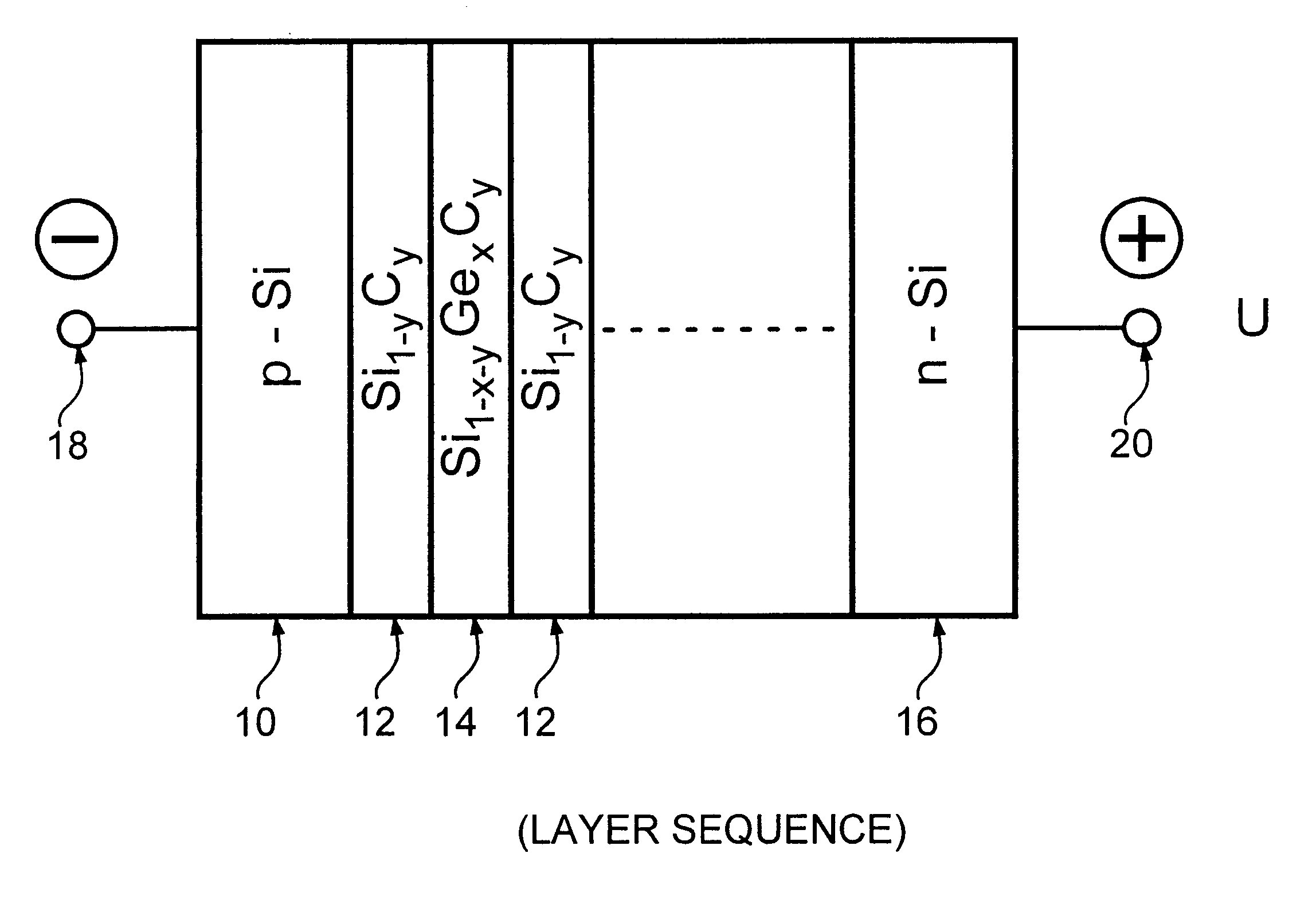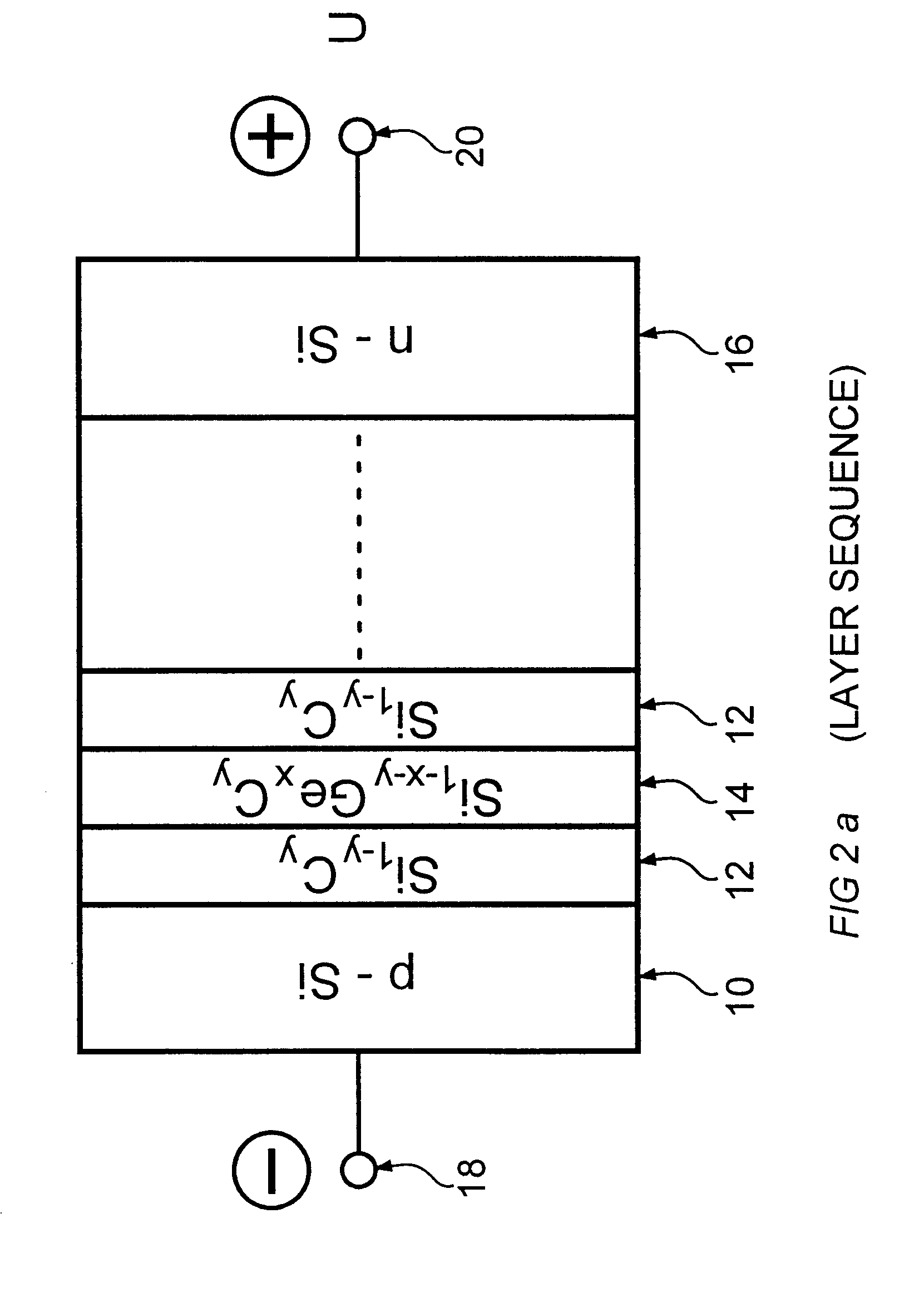Semiconductor components, in particular photodetectors, light emitting diodes, optical modulators and waveguides with multilayer structures grown on silicon substrates
- Summary
- Abstract
- Description
- Claims
- Application Information
AI Technical Summary
Benefits of technology
Problems solved by technology
Method used
Image
Examples
Embodiment Construction
Turning first of all to FIG. 1a, the shape of the valence band VB and conduction band LB edges is shown for the transition from an Si single crystal substrate to a Si.sub.1-x Ge.sub.x alloy. It can be seen that the Si.sub.1-x Ge.sub.x alloy layers have a smaller band gap than Si and that the band edge step is mainly in the valence band.
FIG. 1b shows again the valence band VB and the conduction band LB for the transition from an Si single crystal substrate to an Si.sub.1-y C.sub.y alloy. It can be seen from this diagram that Si.sub.1-y C.sub.y alloy layers have a smaller band gap than Si and it is noted that the band edge step in Si / Si.sub.1-y C.sub.y heterostructures is mainly in the conduction band.
FIG. 1c shows the valence band VB and the conduction band LB for the transition from an Si single crystal substrate to a Si.sub.1-x-y Ge.sub.x C.sub.y alloy. Again the Si.sub.1-x-y Ge.sub.x C.sub.y alloy layers have a smaller band gap than Si. There is again a pronounced step in the vale...
PUM
 Login to View More
Login to View More Abstract
Description
Claims
Application Information
 Login to View More
Login to View More - R&D
- Intellectual Property
- Life Sciences
- Materials
- Tech Scout
- Unparalleled Data Quality
- Higher Quality Content
- 60% Fewer Hallucinations
Browse by: Latest US Patents, China's latest patents, Technical Efficacy Thesaurus, Application Domain, Technology Topic, Popular Technical Reports.
© 2025 PatSnap. All rights reserved.Legal|Privacy policy|Modern Slavery Act Transparency Statement|Sitemap|About US| Contact US: help@patsnap.com



